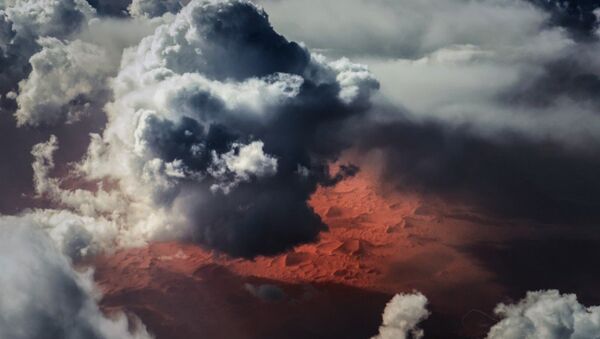NASA will track the motion of colorful, chemically induced clouds within the ionosphere and aurorae, at altitudes between 96 and 124 miles up, as a means to visually track the motion of excited particles in space, according to Newsweek.
The rocket, currently set to launch at 8:30 p.m. ET, will release ten small canisters, each about the size of a can of soda, that will then disperse small amounts of barium, strontium and cupric-oxide which, after interacting, will cause the man-made clouds to form.
The US space agency has promised that the chemicals released into the upper atmosphere, and their resulting combinations, pose no threat to people or other forms of life on the ground.
The bright blue-green and red clouds are projected to be visible from areas in New York, all the way down south to North Carolina and west to Charlottesburg, Virginia.
In visually studying the motions of particles released into the Earth's upper atmosphere, NASA seeks to understand the transfer of mass and energy in the regions bordering space.
"The movement of neutral and ionized gases are important to understand as they reveal how mass and energy are transported from one region to another. These movements also respond to changes in the sun's activity," NASA said in a statement.
The tests will "measure atmospheric winds and/or ion drifts in the upper atmosphere and ionosphere," according to the space agency.
"By tracking the motions [of the gas] directly with cameras on the ground or in an airplane, these tracers make it possible to observe the movements of the upper atmosphere or the ionosphere," stated NASA.
Live coverage of the launch and the clouds will be available online through the NASA web site.



